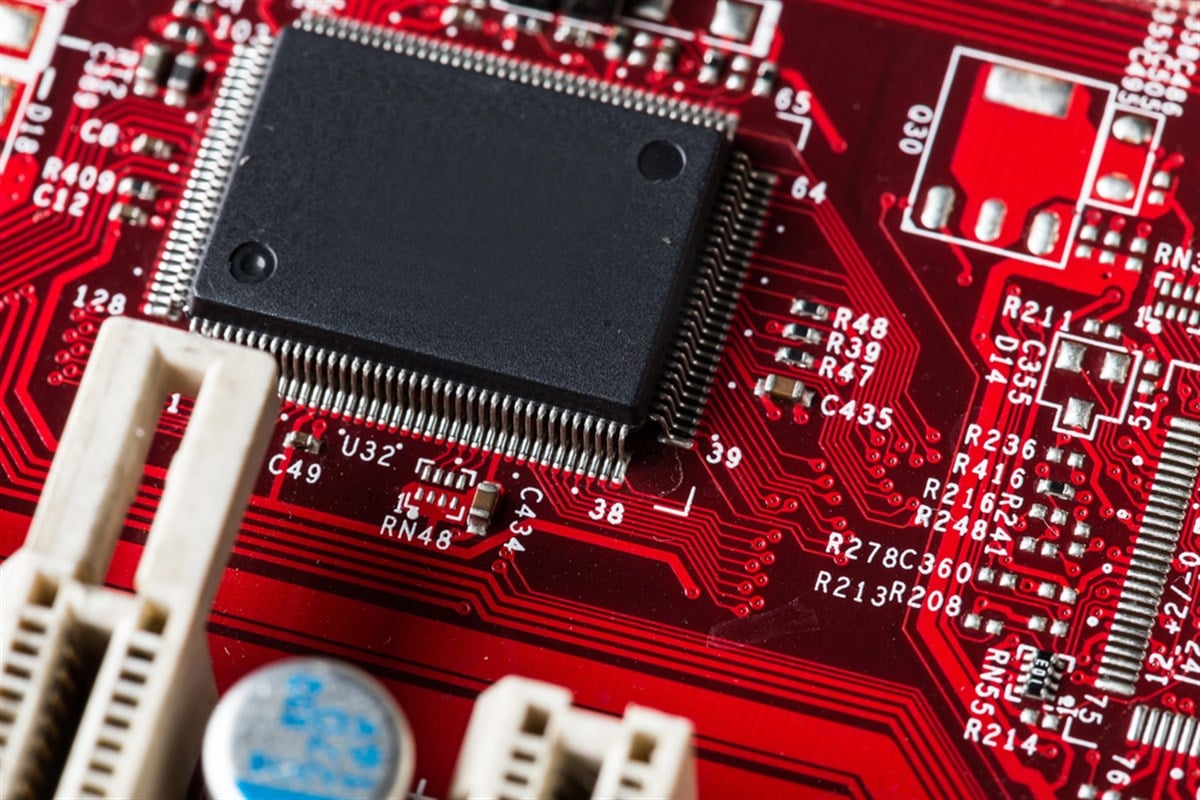Top 2 Stocks to Ride the AI Boom Without NVIDIA

There is one name synonymous with the artificial intelligence (AI) revolution in the computer and technology sector. NVIDIA Corp. (NASDAQ: NVDA) commands over 92% of the graphic processing unit (GPU) market, making it the leading company benefiting from the surge in AI infrastructure demand. Their AI chips are in such demand that their next-generation Blackwell GPUs are already sold out for the next 12 months. They are essential tools for cutting-edge AI, machine learning (ML) and high-performance computing (HPC) tasks often performed in data centers.
Why ASICs Could Outperform GPUs for Specialized AI Tasks
Competitors in the computer and technology sector, like Advanced Micro Devices Inc. (NASDAQ: AMD), can't make a dent in NVIDIA’s moat. However, two other rising stars in the AI boom are gaining ground, making application-specific integrated circuits (ASICs). These are AI chips custom-built to perform specific tasks like inference and training even more efficiently and at a lower cost than NVIDIA’s GPUs.
While NVIDIA’s GPUs power the foundation of AI, ASICs offer more specialized, efficient solutions. Here are two alternative stocks to buy to capture the next phase of the AI Gold Rush.
Broadcom: Bolstering AI Infrastructure With Networking and ASICs
Broadcom Inc. (NASDAQ: AVGO) specializes in high-performance networking solutions, offering the speed and bandwidth required to power modern AI data centers. Broadcom’s ethernet switches enable GPUs and chips to communicate with each other, especially during distributed training of large AI models and applications. Broadcom commands over a 50% market share of the ASICs industry.
Broadcom develops custom AI accelerators (XPUs), which are designed and optimized for specific tasks like training, inference and compute offloading. They also develop networking ASICs like the Trident and Tomahawk series that manage data traffic in AI data centers. They primarily develop ASICs for three major hyperscalers, including Alphabet Inc. (NASDAQ: GOOGL) tensor processing units (TPUs), Meta Platforms Inc. (NASDAQ: META) Meta-training-and-inference-accelerators (MTIAs), which are used to support generative AI services and ByteDance, the Chinese owner of TikTok.
Powering 77% FQ1 2025 YOY AI Revenue Growth
While its conventional semiconductor business still remains sluggish, its AI-centric revenues surged 77% in its FQ1 2025 earnings to $4.1 billion, well above its $3.8 billion forecast.
Gross margins were an incredible 79.1%, helping to grow total revenues by 24.7% year-over-year (YOY) to $14.92 billion, crushing consensus analyst estimates for $14.62 billion by $300 million.
The company is ratcheting up its R&D for its next-generation XPUs and Ethernet switches.
Broadcom also hinted at signing two more hyperscalers for XPUs, but it will take at least 1.5 years to develop.
Additionally, Broadcom raised its FQ2 revenue guidance to $14.90 billion vs $14.71 billion consensus estimates.
Marvell Technology: Growing ASICs Business with Amazon and Microsoft
Another key player in the ASIC market is Marvell Technology Inc. (NASDAQ: MRVL), focusing on data center interconnects (DCI). Its advanced Serializer-Deserializer (SerDes) technology enables the efficient movement of large data volumes within AI systems, helping overcome major data center bottlenecks. Though smaller than Broadcom, with less than one-sixth of its revenue, Marvell remains a critical player in the AI infrastructure buildout. However, they are gaining ground thanks to its close relationship with hyperscalers Amazon.com Inc. (NASDAQ: AMZN) developing their Trainium and Inferentia AI chips and, speculatively, Microsoft Co. (NASDAQ: MSFT) next-generation MAIA AI chip development.
Marvell's custom ASICs are optimized for training and inference (Trainium and Inferential ASICs) with low-power designs primarily for data center AI workloads. Its ARM-based system on a chip (SoC) subsystems support 14 nanometers (nm), 7nm, 5nm and 3nm processes. Marvell touts having developed over 2,500 ASICs in the past 25 years and being the first to roll out ASIC-as-a-service in 2020.
Growth Is Great, But Signs of Slowdown Alarm Investors
Marvell Technology reported FQ4 2025 earnings-per-share (EPS) of 60 cents, beating consensus estimates by a penny. Revenues rose 27.4% YOY, $1.82 billion vs $1.8 billion consensus estimates. GAAP gross margin was 50.5%. Data center revenues climbed 75% YOY, driven by the AI boom.
This is on top of the 54% YOY generated last year. Its custom ASIC revenue helped drive data center revenues to a record $1.37 billion. However, its Consumer segment revenues fell 38% YOY to $88.7 million, driven by a weak gaming market.
The disappointment came from its lackluster guidance for FQ1 2026. While they did beat consensus analyst estimates, they didn't beat them by much, as analysts were expecting a much larger upside beat.
Marvell expects EPS between 56 cents and 66 cents, with a midpoint of 61 cents vs. 60 cents consensus estimates. Revenues are expected to be between $1.78 billion and $1.97 billion, with a midpoint of $1.875 billion versus $1.87 billion consensus estimates.
Learn more about BRCM


